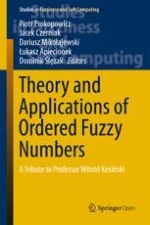This book is open access under a CC BY 4.0 license.
This open access book offers comprehensive coverage on Ordered Fuzzy Numbers, providing readers with both the basic information and the necessary expertise to use them in a variety of real-world applications. The respective chapters, written by leading researchers, discuss the main techniques and applications, together with the advantages and shortcomings of these tools in comparison to other fuzzy number representation models. Primarily intended for engineers and researchers in the field of fuzzy arithmetic, the book also offers a valuable source of basic information on fuzzy models and an easy-to-understand reference guide to their applications for advanced undergraduate students, operations researchers, modelers and managers alike.
